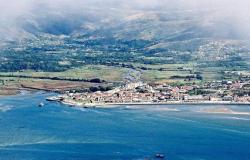The heart, the first organ that develops in mammals, is made up of highly organized structures that need to be coordinated to function correctly and a scientific team managed to create a spatial map of the developing human heart, with single-cell resolution.
The details of the research are published this Wednesday in the journal Nature, in an article led by scientists from the University of California in San Diego, in the United States, and which reveals how cells organize as the heart develops.
Despite the importance of this body, Scientists know little about how exactly your cells are organizednot knowing, for example, how they are spatially coordinated to create complex morphological structures, which are crucial for cardiac function.
This complete cellular ‘atlas’ advances precisely this knowledge and reveals how different types of cardiac cells interact and organize themselves into complex structures essential for the functioning of the heart, reported this Wednesday the Efe agency.
If these muscular structures of this organ do not form correctly, Congenital heart disease, the most common birth defect, can occur, and several heart diseases can also develop in adulthood, remember the authors.
To map the heart, researchers, led by Elie Farah, Quan Zhu and Neil Chi, combined RNA sequencing and cutting-edge imaging technology, according to the magazine.
Thanks to these single-cell technologies, were able to generate an improved list of human cardiac cell types.
The map revealed the regional distribution of a wide range of cardiac cell subpopulations, rrevealing how these cells interact during heart development.
The single-cell analysis identified 75 subpopulations that exhibited characteristics that corresponded to their anatomical location and developmental stage, including novel cell subtypes in heart valves.
Furthermore, the authors discovered interactions between specific combinations of cell populations. They observed, for example, interactions between ventricular heart muscle cells, fibroblasts (part of the connective tissue) and endothelial cells (lining of blood vessels), which may play a role in the formation of the ventricular wall.
Specifically, the scientific team used a spatial imaging method called Merfish, which allowed preliminary spatial identification of individual cells.
Together with the single-cell transcriptomics technique, which allows us to know which genes are expressed and in which cells (transcriptome), scientists have achieved a greater resolution and depth of understanding “unprecedented” of individual cells and where they reside.
The detailed information discovered in this study may help improve understanding of the mechanisms underlying congenital and adult heart disease, and may also guide new cardiac repair strategiesthe authors conclude.





